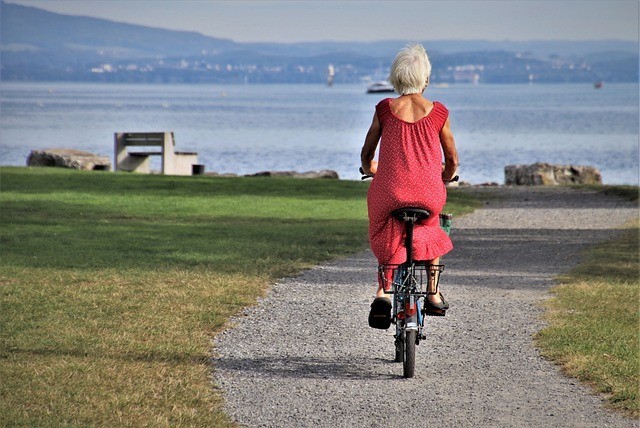views
Introduction:
The world is advancing in science and technology while experiencing a demographic shift, as fewer babies are born each year. At the same time, an increasing number of women are living healthily into their 70s, 80s, and even 90s.
By 2050, the world will host approximately 2.1 billion people aged 60 or older--almost double the 2020 figure--ushering in an unprecedented demographic transformation. At first, it sounds like a victory of modern medicine and progress—but here’s the concerning fact: we are quietly stepping into a demographic storm... and women are not just part of this change; they are the face of it. Menopause, once seen as a private biological event, is now tied to something much bigger—the shrinking of our future generations. And if we don’t take this seriously, the balance between the young and the old may collapse faster than we think. This isn’t a distant projection—it’s unfolding now, and its implications stretch across health, economy, families, and the very fabric of societies. Ignoring it won’t make it go away.
Background
For decades, population debates were about “too many people.”
But the world has flipped. Today, we’re facing the opposite—too few births and too many living longer lives.
Fertility rates in countries like South Korea (0.72), Japan (1.2), Italy (1.24), and China (1.09) have dropped far below the replacement level of 2.1 (World Bank, 2024). At the same time, more women are crossing into menopause than at any point in human history.
By 2030, an estimated 1.2 billion women worldwide will be postmenopausal (WHO, 2021).
This shift is not just a “women’s issue.” It’s an economic, social, and even cultural shift. A future where children are scarce and grandparents are many will reshape everything—workforces, health systems, and even family traditions.

Why It Matters: The Socioeconomic Lockstep
- Health Systems: An ageing female-dominant demographic increases demand for menopause-related care, chronic illness management (cardiovascular disease, osteoporosis), and geriatric services. Health systems—particularly primary care—are not prepared.
- Labour Markets: With fewer young workers and growing numbers of mid-life women, economies may face productivity shortfalls unless women remain in or re-enter the workforce. Yet menopause—if unaddressed—can impair productivity, attendance, and retention.
- Family & Caregiving: A shrinking younger generation means fewer potential caregivers. Women, who already shoulder the bulk of unpaid care, face increasing burdens as traditional family support systems become stretched, jeopardizing both workforce participation and elder well-being.
The Gendered Reality
Due to biological and sociocultural factors, women will make up the majority of the oldest populations. Yet our policy spotlight remains trained on either youth or old age generally—rarely on mid-life women, whose health transitions (like menopause) are quietly underfunded and poorly supported. This invisibility is increasingly untenable as mid-life women become a demographic majority.
Fertility Decline: Why the Base Is Crumbling

Let’s look at the numbers side by side:
|
Country/Region |
Fertility Rate (2024) |
% of Women Over 50 (Projected 2030) |
Median Age 2030 |
|
South Korea |
0.72 |
37% |
56 |
|
Japan |
1.2 |
39% |
54 |
|
Italy |
1.24 |
35% |
52 |
|
China |
1.09 |
30% |
48 |
|
Global Average |
2.3 → falling to 2.0 |
28% |
40 |
Sources: World Bank 2024, UN DESA 2023, WHO 2021)
Fertility has fallen globally from ~5 births/woman (1950s) to ~2.3 in 2023 — a profound structural shift. This drives the “low-fertility world” framing. Our World in Data
At the same time the 60+ population is rising quickly: ~1.1 billion in 2023 → ~1.4 billion by 2030 → 2.1 billion by 2050 (WHO/UN projections). That is the demographic pressure that makes menopause, aging and women’s health policy a central social and economic issue (World Health Organization).
Conclusion
This challenge is not the government’s alone to solve. Yes, policies on fertility and elder care matter, but the real frontline is in communities and families. Every household, every workplace, every neighborhood must re-think how we support women before, during, and after menopause. Because this isn’t just about individual health—it’s about the survival of balanced societies.
So here’s the question: What happens when the scales tip so far that the old outnumber the young, and menopause becomes a symbol of generational imbalance? Will we look back and wish we acted
This was just the opening of the conversation. In Series 2, we’ll dive deeper into how menopause intersects with healthcare systems and why women’s health in midlife may hold the key to stabilizing the future.
Because if we don’t rethink menopause now, we risk letting it quietly shape the destiny of entire nations.
---copyright notification---
© 2025 by Mariza L. Lendez. All rights reserved. www.chikicha.com
This article "Menopause in a Low-Fertility World: Why It Matters More Than You Think" is forms part of my dissertation. All materials herein are protected by copyright and academic intellectual property laws. No part of this work may be reproduced, published, or distributed in whole or in part without express written permission from the author, except for academic citation or fair use with proper attribution. Based on verified data, peer-reviewed literature, and insights from national and global agencies and with the help of AI for deep research.
Citation Format
Lendez, Mariza (2025). [Menopause in a Low-Fertility World: Why It Matters More Than You Think] In "Designing a Purpose-Driven Retirement Model Based on the IKIGAI Philosophy" (unpublished dissertation). Philippine Women's University.

REFERENCES
1. United Nations, Department of Economic and Social Affairs, Population Division. (2022). World Population Prospects 2022: Summary of Results.
2. United Nations, Department of Economic and Social Affairs. (2020). World Population Ageing 1950–2050 Highlights.
3. World Health Organization. (2024). Ageing and Health [Fact sheet].
4. World Health Organization. (n.d.). Age dependency ratio [Metadata].
5.;World Health Organization. (2024). Progress Report on the United Nations Decade of Healthy Ageing.
6. HelpAge International & UN Women. (2022). Recognising Older Women – Gender Equality for All Ages.




















Comments
0 comment